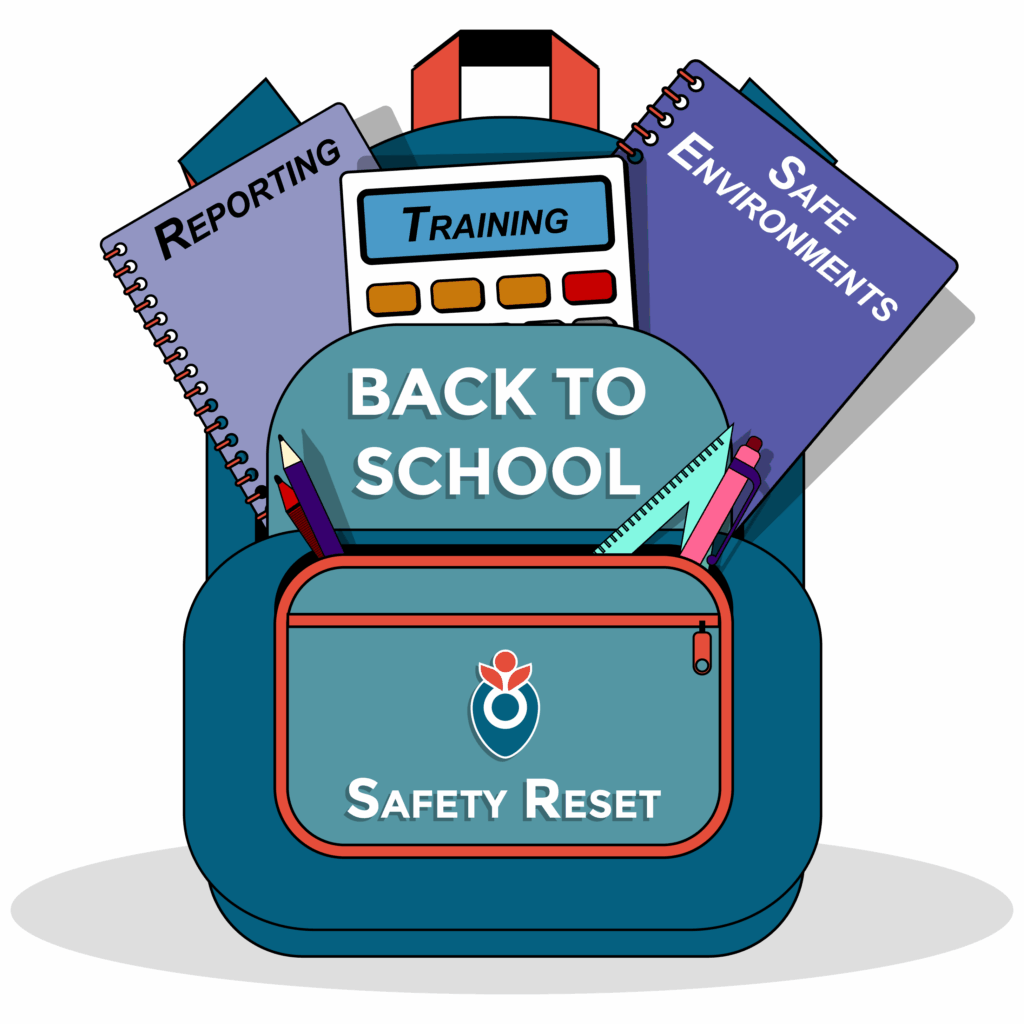Circles of Safety: Training of Trainers
Circles of Safety: Training of Trainers Circles of Safety is a skill-based,…
As the school year kicks off, youth-serving organizations (YSOs) are buzzing with fresh energy, new faces, and renewed purpose. It’s also the perfect time for a “safety reset” – focusing on three of the eight elements of prevention: Training, Safe Environments, and Reporting.

Training is the foundation of a strong prevention culture. As your staff and volunteers return—or join for the first time—use this back-to-school season to reinforce critical knowledge and build shared accountability via training.
Training is more than a checkbox—it’s a culture-building tool. Starting the year with strong effective, well-rounded training ensures every adult is informed, equipped, and committed to keep kids safe.
Creating safe environments means being intentional about how spaces are used and how people interact within them.
A few simple updates can make a big difference. Start the year strong by ensuring every environment supports safety, transparency, and trust.
Children are safer when adults know what to look for and what to do when they see it. This is an ideal time to review and reinforce your organization’s reporting policies.
Reporting is only effective when it’s clear, encouraged, and practiced. Starting the year with strong, visible reporting expectations sets the tone for a safe, responsive environment.
Every child deserves to be protected from child sexual abuse and every adult is responsible to ensure their safety. Reviewing and implementing the 8 Elements of Prevention all year-round—especially updating Training, Safe Environments, and Reporting for the back-to-school season—helps your YSO keep children safe throughout the entire school year.
A strong prevention culture doesn’t just protect youth — it builds trust with families, strengthens your team, and reinforces your organization’s values. Let’s commit to making child sexual abuse prevention not just a policy, but a practice — all year long.
For more information on how to prevent child sexual abuse at your YSO, explore the other areas of Safe Kids Thrive.
Circles of Safety: Training of Trainers Circles of Safety is a skill-based,…
Expanding Adult Training to Reduce Problem Sexual Behavior by Youth: An evaluation study This…
Massachusetts’ Juvenile Justice System Response to Problem Sexual Behavior by…
Customized child sexual abuse prevention guidelines to meet the unique needs of any organization that serves children.
Learning Center Registration
Sign up for an account and start your learning experience.
Free Online Assessment
Let us help you find out where to start.